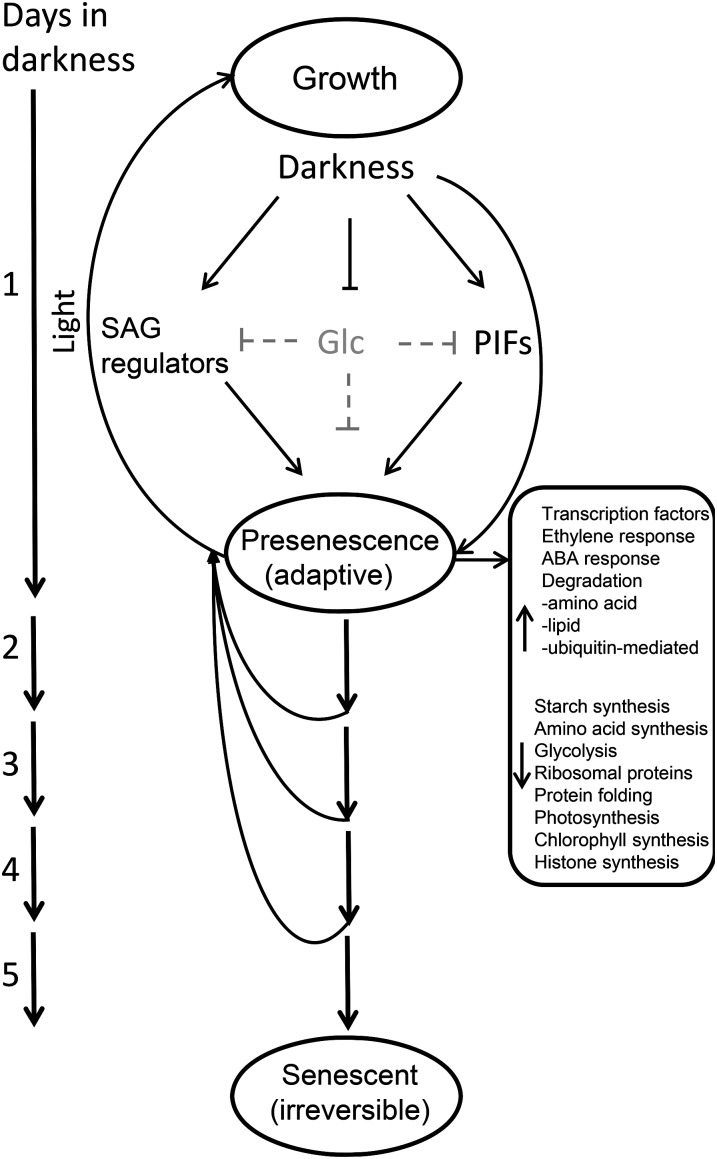Figure 12.
A model illustrating the detached immature inflorescence response to darkness. In light, detached immature inflorescences held in water continue development to produce siliques containing seeds. However, inflorescences exposed to 24 h of darkness cease growth and their Glc content declines (indicated by gray). Reduced Glc content releases suppression on the transcript accumulation of senescence- and light deprivation-related genes, leading to their increased transcript abundance. Light deprivation signaling further enhances their accumulation. A proportion of genes are up- and down-regulated independent of tissue carbohydrate status. The transcriptome response at 24 h is adaptive, readily reversible, and centered on mobilizing carbon from alternative sources and the repression of biosynthetic pathways, protein synthesis, and cellular growth programs. Inflorescences can cope with an additional 3 d of darkness before their heterotrophic metabolism has passed the point of no return. This is controlled, in part, by continued expression of genes such as ANAC092 and PIFs, which were induced initially in the inflorescences during their reversible adaptive period.

